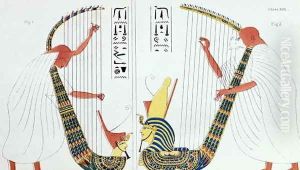Sir John Gardner Wilkinson Paintings
Sir John Gardner Wilkinson was a pioneering British Egyptologist and one of the foremost Egyptologists of the 19th century. Born on October 5, 1797, in Little Missenden, Buckinghamshire, England, Wilkinson developed an early interest in antiquities and ancient cultures. He was educated at Harrow School and then at Exeter College, Oxford, though he left without obtaining a degree. His passion for Egyptology was ignited after reading about the discoveries of earlier explorers and the decipherment of the Rosetta Stone.
Wilkinson first traveled to Egypt in 1821, where he dedicated himself to the study of ancient Egyptian culture, history, and language. Over the years, he explored numerous archaeological sites, making detailed recordings and sketches that would later become invaluable resources for scholars. His meticulous work included the copying of inscriptions and paintings from tombs and temples, as well as the study of mummies and the cataloging of Egyptian antiquities.
One of Wilkinson’s significant contributions was his work on Egyptian chronology, where he attempted to establish a timeline for the reigns of the pharaohs. His other major work was the publication of 'Manners and Customs of the Ancient Egyptians' (1837), a comprehensive account of Egyptian civilization that became a seminal reference for Egyptologists. This work, along with his detailed maps and plans of ancient Theban temples and tombs, solidified his reputation as a leading expert in the field.
Wilkinson was knighted in 1839 in recognition of his contributions to Egyptology and the greater understanding of ancient Egyptian culture. He continued to write and publish on various aspects of Egyptology and remained an influential figure in the field throughout his life.
Sir John Gardner Wilkinson passed away on October 29, 1875, in Llandovery, Wales. His extensive work laid the foundation for future Egyptological studies and inspired many who came after him to continue exploring the rich history of ancient Egypt. His meticulous records and publications remain an important resource for scholars to this day.
